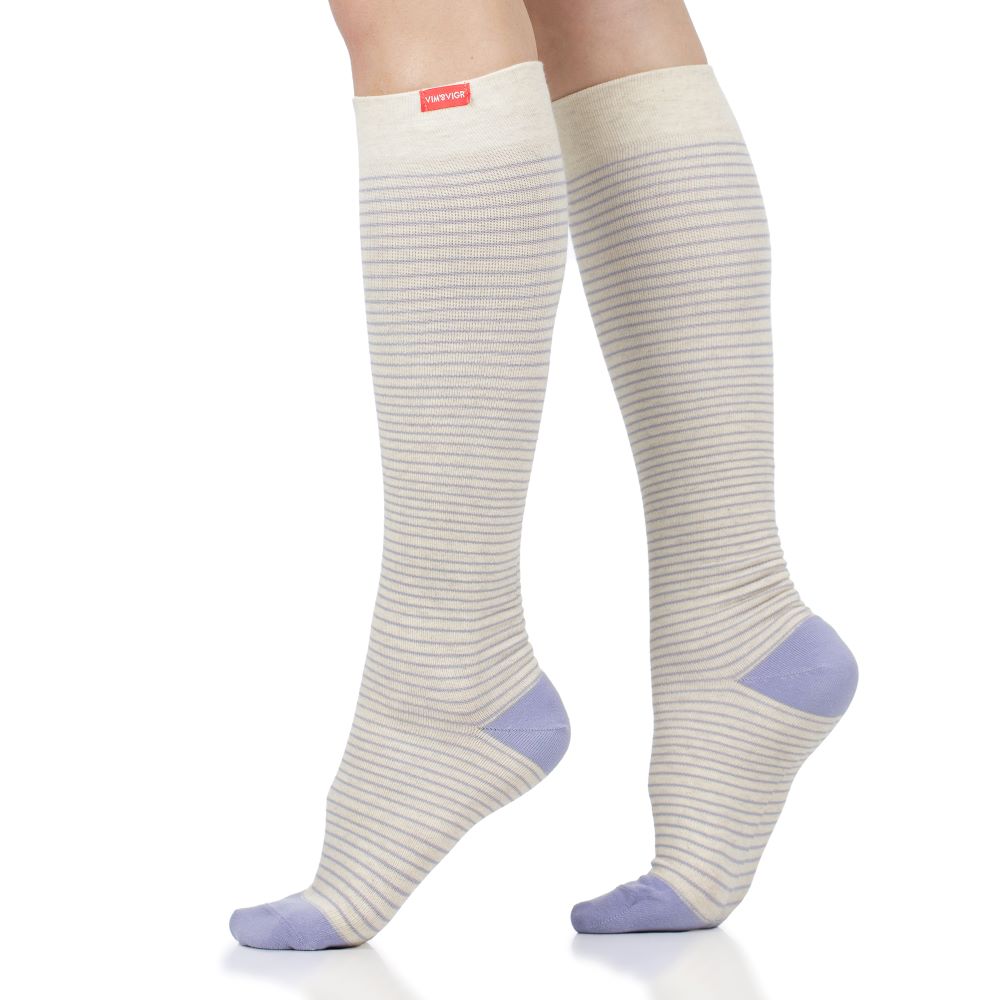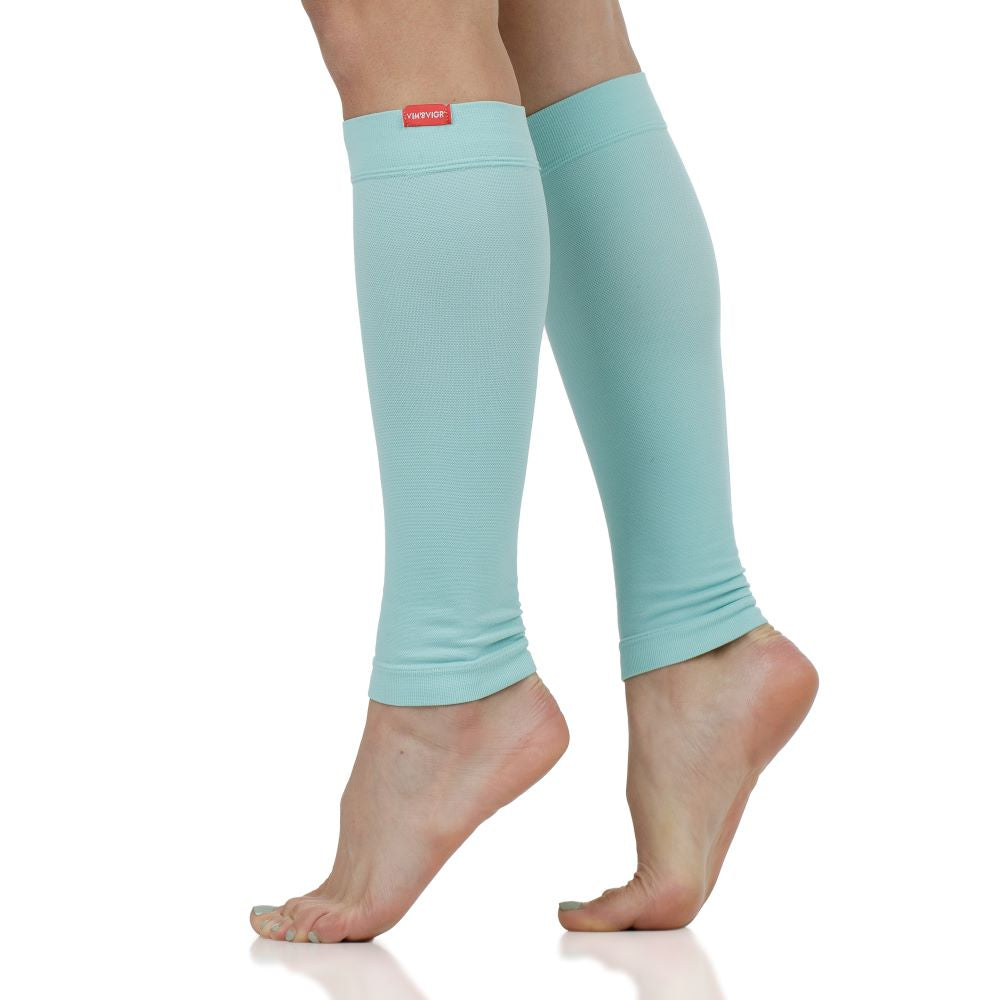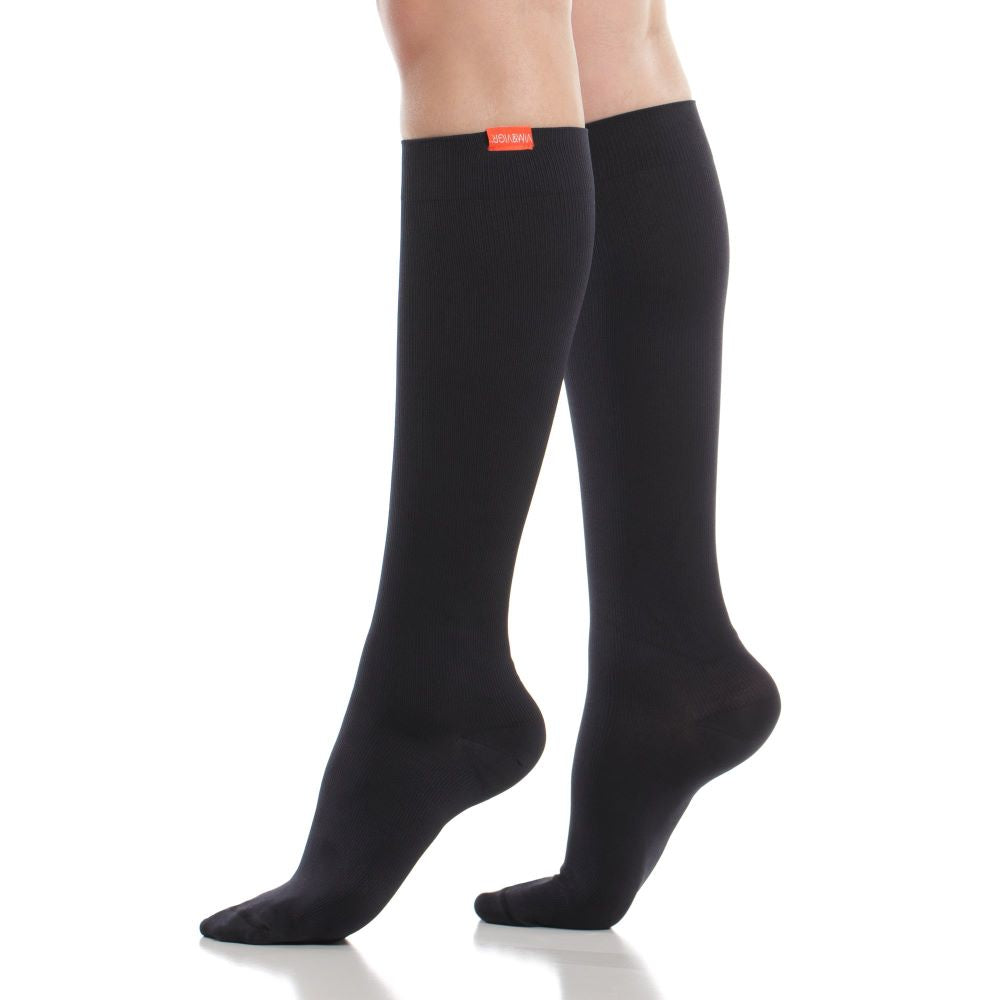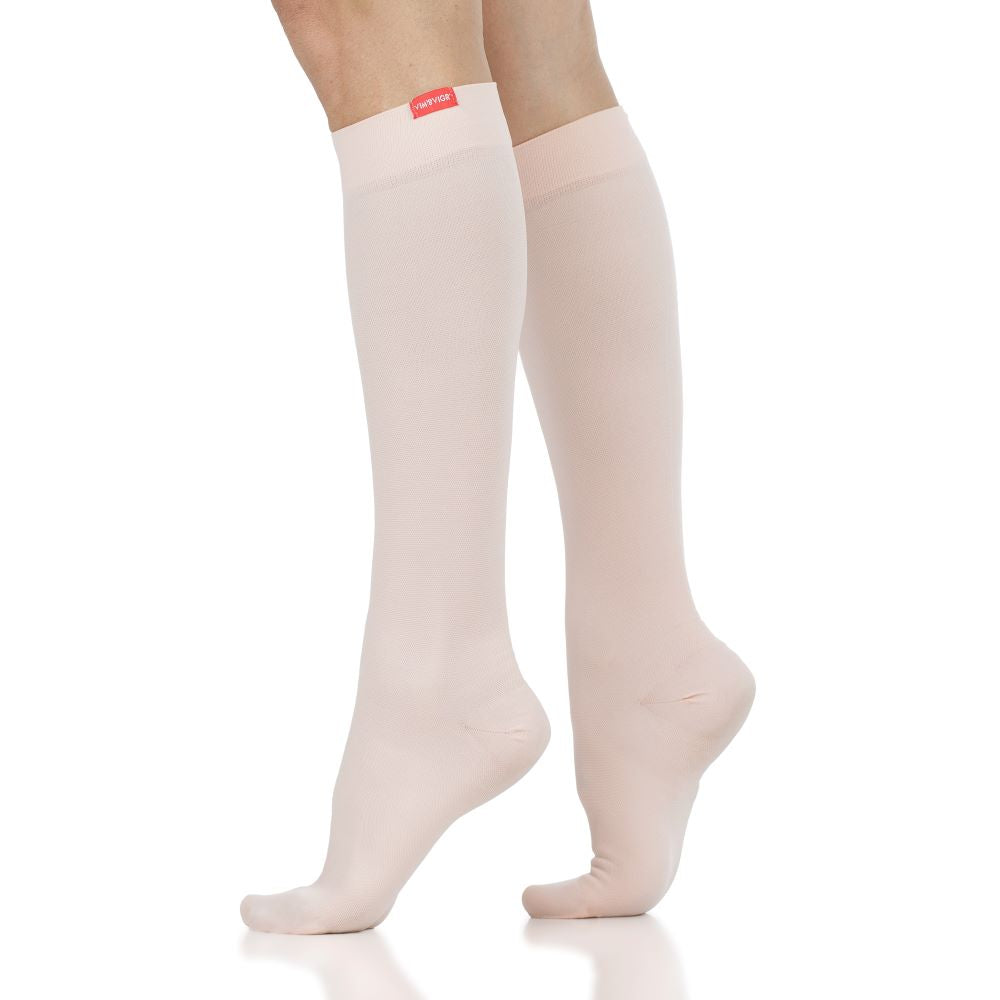The Benefits of Compression Socks for Orthostatic Hypotension
Orthostatic hypotension is a medical condition that can feel debilitating. It makes you feel dizzy because of low blood pressure when you stand up, caused by blood having pooled into the lower limbs and being difficult to push up towards the head. When your body struggles to do this naturally, help from items such as compression socks can be invaluable.
Thanks to the way compression socks massage the lower limbs, they prevent blood and fluid buildup in the area. This keeps the legs feeling fresher and more lightweight, while supporting a healthy blood flow. Wearing compression socks for orthostatic hypotension can, therefore, be an easy, effective, and convenient way to deal with this condition.
Read on to find out more about how compression socks can help and how to pick the best ones when you suffer from orthostatic hypotension.
What Is Orthostatic Hypotension?
To understand how compression works in your favor against orthostatic hypotension, we need to look into this condition. Hypotension means low blood pressure. Orthostatic hypotension is a drop in blood pressure that occurs when you stand up.
If you’ve been working away in an office or traveling for an extended period of time, blood pools in the lower legs, around the ankles and feet. When you then stand up, your body will try to push the blood back up towards the heart to continue a normal circulatory flow. The ultimate aim of this is to circulate oxygen in the body and to the brain.
When, for any reason, blood cannot travel upwards, then your blood pressure can drop suddenly. Symptoms of orthostatic hypotension also include:
- Feeling dizzy or lightheaded;
- Weakness or lack of energy;
- Blurred vision;
- Nausea;
- Difficulty concentrating;
- Temporary loss of consciousness (syncope).
How Do Compression Stockings Work for Orthostatic Hypotension?
Through applying pressure on the lower limbs, stronger towards the ankles and weaker towards the knees, graduated compression socks and stockings stimulate blood flow from the legs towards the heart and head. This means that you’re less likely to experience the symptoms of orthostatic hypotension, as your compression socks will have prevented blood from pooling around your ankles.
Compression socks apply a gentle level of pressure. This makes them easy to wear during extended periods of inactivity or when lying down or sleeping. Unless prescribed to wear higher compression levels by your doctor, you can pick up a pair of these socks in the lightest level and ease yourself into the feeling, becoming comfortable with compression.
The Benefits of Compression Socks for Orthostatic Hypotension
If you experience orthostatic hypotension frequently and also want to protect your legs from other conditions related to poor blood flow, compression socks are an easy first tool to reach for. They have been proven effective against the development of varicose veins and Deep Vein Thrombosis (DVT), and they relieve a lot of unwanted side effects of being on your feet all day or sitting down for too long. They are also beneficial when you recover from surgery and are bedridden, thereby not being able to walk around and get blood moving through the foot and lower leg area.

Preventing Blood Pooling in Lower Extremities
Thanks to the different levels of pressure applied from the lowest end of the limbs upwards, compression stockings and socks stimulate circulation. As blood no longer pools around your ankles and feet, you will no longer feel like your legs are heavy and achy. You will also experience less swelling while you wear your compression garments.
Most importantly, your body will no longer need to put a significant amount of effort into pushing blood back up from your legs towards your head and heart. This is why compression socks can be helpful for those orthostatic hypotension patients.
Maintaining Blood Pressure
A well-flowing circulatory system ensures that our entire body works at its best. It will boost our energy levels, ensure that our limbs are revitalized and feeling lightweight, and will reduce the risk of developing conditions such as edema, varicose veins, and more.
One of the other key benefits of a boosted circulation is the potential for homogenizing blood pressure. The easier blood flows, the less likely you are to develop high blood pressure (excluding other health conditions). Therefore, we can consider compression socks to have a positive impact on those with higher blood pressure since they promote good blood flow. Additionally, as blood is not blocked in your lower legs, then there would be no reason (barring other medical conditions) to experience low blood pressure (hypotension). Overall, compression socks can help maintain a constant blood pressure.
Improving Circulation
You may have heard people complain about having bad peripheral circulation, suffering from cold feet, or pins and needles. This is all caused by a lack of sufficient blood flowing into the extremities. Thanks to the way that compression socks work, they push blood to move through the body, avoiding it resting and pooling in the lower legs.
As a result, you’ll experience a better overall circulation, which reduces all the other symptoms mentioned above.

How to Choose the Best Orthostatic Hypotension Compression Socks
To make the most of wearing compression garments, you need to ensure they are the right fit for you and that they match your activity levels and the surrounding environment. Style also plays a part, of course - after all, you want to be able to wear your compression socks wherever you go!
Here are the key elements we think you need to look at to find the best orthostatic hypotension compression socks.
Compression Level
Compression socks come in various levels of pressure, which is good news if this is your first time trying out a pair. People who sit all day at work or who are on their feet a lot can start by wearing the lightest compression level (15-20 mmHg), which adapts to pretty much any activity during the day or to sleeping.
If you need stronger compression, either because of the demands of your lifestyle or because you need more help fighting conditions like orthostatic hypotension, you can reach for moderate compression (20-30 mmHg). Or, through consultation with your doctor, you could be prescribed medical grade socks (30-40 mmHg).
Type & Style
There are lots of options to choose from so you can enjoy compression therapy in style. Whether you go for regular socks or open-toed ones, compression stockings that ride higher up the thigh or full coverage from compression leggings or tights, you will get the boost in blood flow and, hopefully, a reduction in orthostatic hypotension symptoms.
You can browse multiple styles and designs here.

Material
For optimal comfort, you should adapt the fabric of your compression socks to your activity and weather conditions. While cotton socks can be worn all day and night casually, they’re not great at wicking away moisture if you’re going for a run.
Choose moisture-wick nylon or merino wool for sports activities. Merino wool is especially good if you get cold feet and need a fabric that will help regulate temperature in your lower limbs.
Size & Fit
Finally, compression socks for orthostatic hypotension need to fit well to work their magic. You have to feel some pressure, so make sure your socks aren’t too loose or they’ll roll down and be useless. However, you should avoid getting socks that are too tight, as you’ll run the risk of inhibiting blood flow.
Check out a detailed guide on sizing here so you can find your perfect fit.
How to Wear Compression Socks for Orthostatic Hypotension
When you suffer from dizzy spells and discomfort upon standing up, the last thing you may be thinking about is fashion. However, thanks to compression socks, you can combine an effective treatment of orthostatic hypotension symptoms with good-looking apparel. Their gentle massage on your lower legs ensures that blood doesn’t pool around your ankles, reducing the effort required to push it back up the body. You’ll also feel more energized and light-footed, as your legs don’t swell as much and you’re protected from other conditions.



















Very informative and helpful as I am battling OH during my PD exercises.
Leave a comment